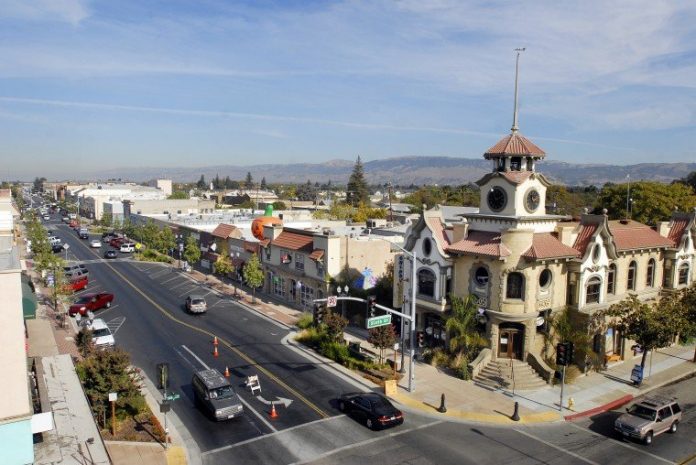
City Council delayed action on Development Center Manager Lee Butler’s proposed plan for downtown, with some council members criticizing Butler for not discussing the plan with local organizations before it reached the dais.
Butler said he analyzed public input collected from a 2013 community workshop and online survey. He used that information to create a 10-item priority list of action items with the aim of downtown revitalization. But the results of an online survey that helped spawn the priority list was not discussed with the Gilroy Downtown Business Association in advance of the July 1 presentation, Butler said.
Addressing downtown’s unreinforced masonry buildings—branded unfit to survive a high-magnitude earthquake—was the No. 1 priority in the proposed plan. On the other hand, looking at reducing or waiving some development fees in the downtown came in last, much to the dismay of councilmembers Peter Arellano, Dion Bracco and Cat Tucker, as well as local property owners.
The City previously honored a zone between First and 10th streets along Monterey and Eigleberry streets, where certain impact fees were waived. That policy was phased out at the end of 2013, and downtown property owner Jose Montes said it fulfilled its purpose—to bring new buildings and businesses to a blighted area.
“When the fee waiver was in place, that’s when we got to construct three new buildings,” Jose Montes said. “That’s what a fee waiver can do for downtown. If we bring the fee waiver back, I don’t think we’d be throwing money away; it’s a long term investment.”
Bracco supported the concept of revisiting that discussion as it relates to water and sewer impact fees, arguing that, in many cases, no new utility infrastructure needs to be installed.
“The downtown is different than the new building going on in the northwest quadrant. The pipes are there, the sewage is there—it’s all there already and we’ve already paid for it,” Bracco said. “We fall over ourselves when some out-of-town corporation asks us for favors but it seems like we don’t want to help our local business owners.”
But the City simply cannot afford to waive fees for development-related costs. The fees go to the City’s General Fund and help sustain critical services like police and fire operations, according to Mayor Don Gage.
“We can try to establish a revolving account so money can be borrowed at a low interest rate, but just giving out public funds isn’t something I’d ever do unless there’s a different solution,” Gage said.
According to Tammy Brownlow, CEO and President of the Gilroy Economic Development Corporation, some major projects in the mid-2000s, including the development of the building now occupied by Heritage Bank, were made viable through the fee waivers.
“I do understand the City’s concerns about fee waivers, but it has been demonstrated in the past to work in spurring development,” she said.
Though fee waivers have proven successful, Brownlow said downtown’s blighted buildings—either vacant, unreinforced masonry or both—drag down the area’s potential.
“Even if you have beautiful buildings across the street or on either side, when you see an empty storefront or window it’s just a detriment to all of downtown,” she said.
The action items in the proposed plan included reviewing downtown parking options, upgrading the arts center and planning for the California High Speed Rail station, as well as continuing discussions with unreinforced masonry property owners to have the buildings retrofitted in a timely manner, among others.
Downtown advocate and property owner Gary Walton said that although he agrees with all the priorities that Butler identified, he disagrees with their order on the list.
“I think there needs to be outreach to the stakeholders to help prioritize,” Walton said, addressing the council. “We [property owners] need to be involved in this process if you’re going to ask us to do it. We have to own this plan, otherwise we’re not going to do it. If it’s not our plan, it’s your plan; if it’s your plan, go do it.”
Many residents offered their own suggestions to fix downtown through the 2013 workshop—attended by roughly 40 people—and the online survey. Suggestions touched on a variety of topics, including parking, the addition of a movie theater, a stronger presence for the arts and eliminating all the bars and clubs on Monterey Street.
Though a majority of the 550 respondents of the online survey agreed the area has potential, nearly half—46 percent—said they had a “somewhat negative” impression of downtown. Vacant buildings were the No. 1 cause of the negative impressions, followed by perceptions of increased crime.
If more shopping opportunities and upscale restaurants were added downtown, and outdoor dining and special events were also increased, respondents said the area would be more useful than it is currently.
“There’s a lot of momentum in downtown right now. I’ve seen it over the past six or seven months now and I’m downtown every day,” Brownlow said. “I get frustrated when people say they don’t come downtown because they don’t think it’s safe or it has nothing to offer—and I beg to differ: it has a lot going on for it and I’m seeing an energy downtown I haven’t seen in years.”
Back in chambers, the council agreed to continue the plan’s discussion until the Aug. 4 meeting to allow the Chamber of Commerce, Economic Development Corporation, Downtown Business Association and members of the public to review the draft plan and submit their comments.
Butler said he’ll be posting the draft action plan on the City’s website by July 16 and encourages Gilroyans to send him their comments.













